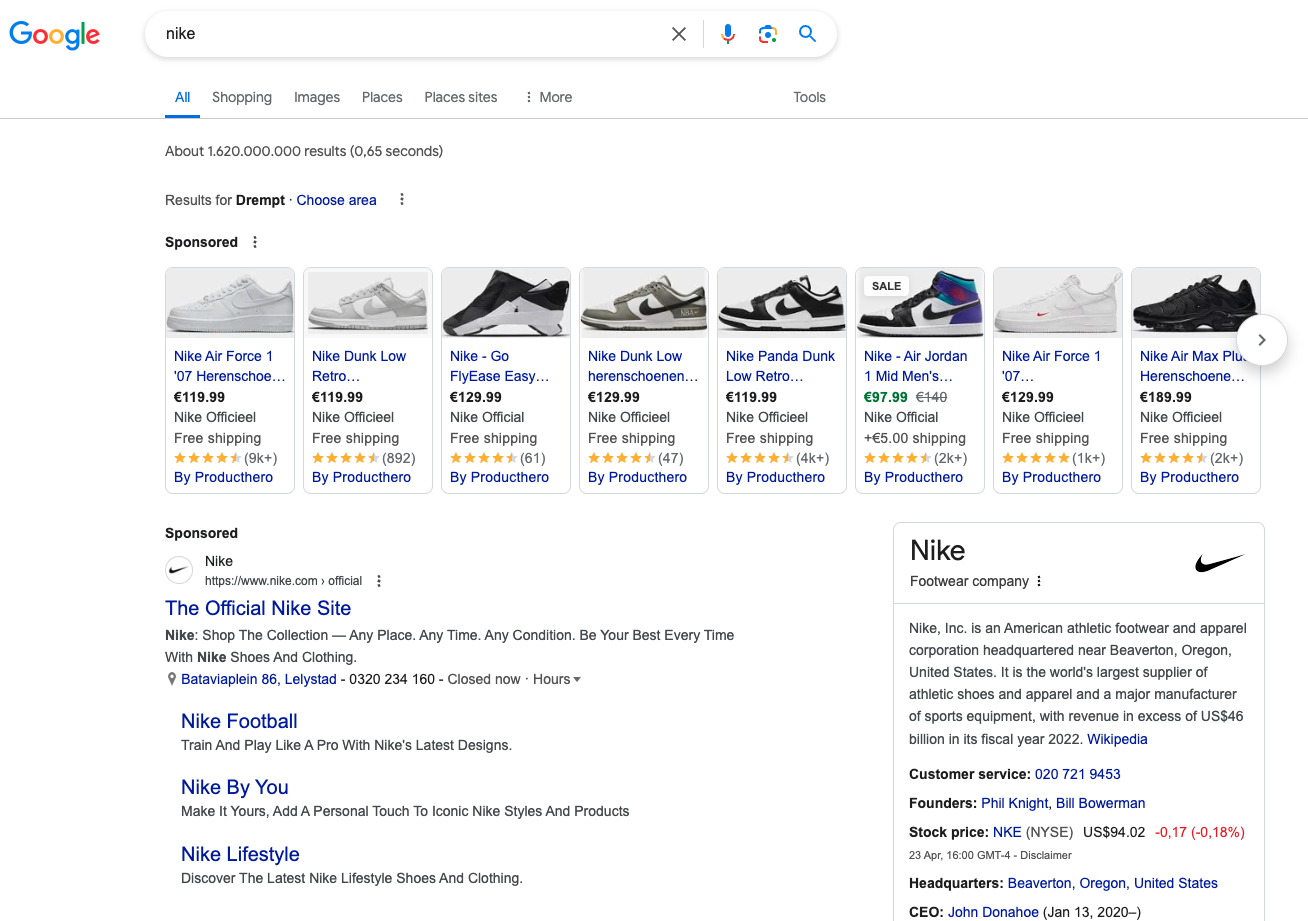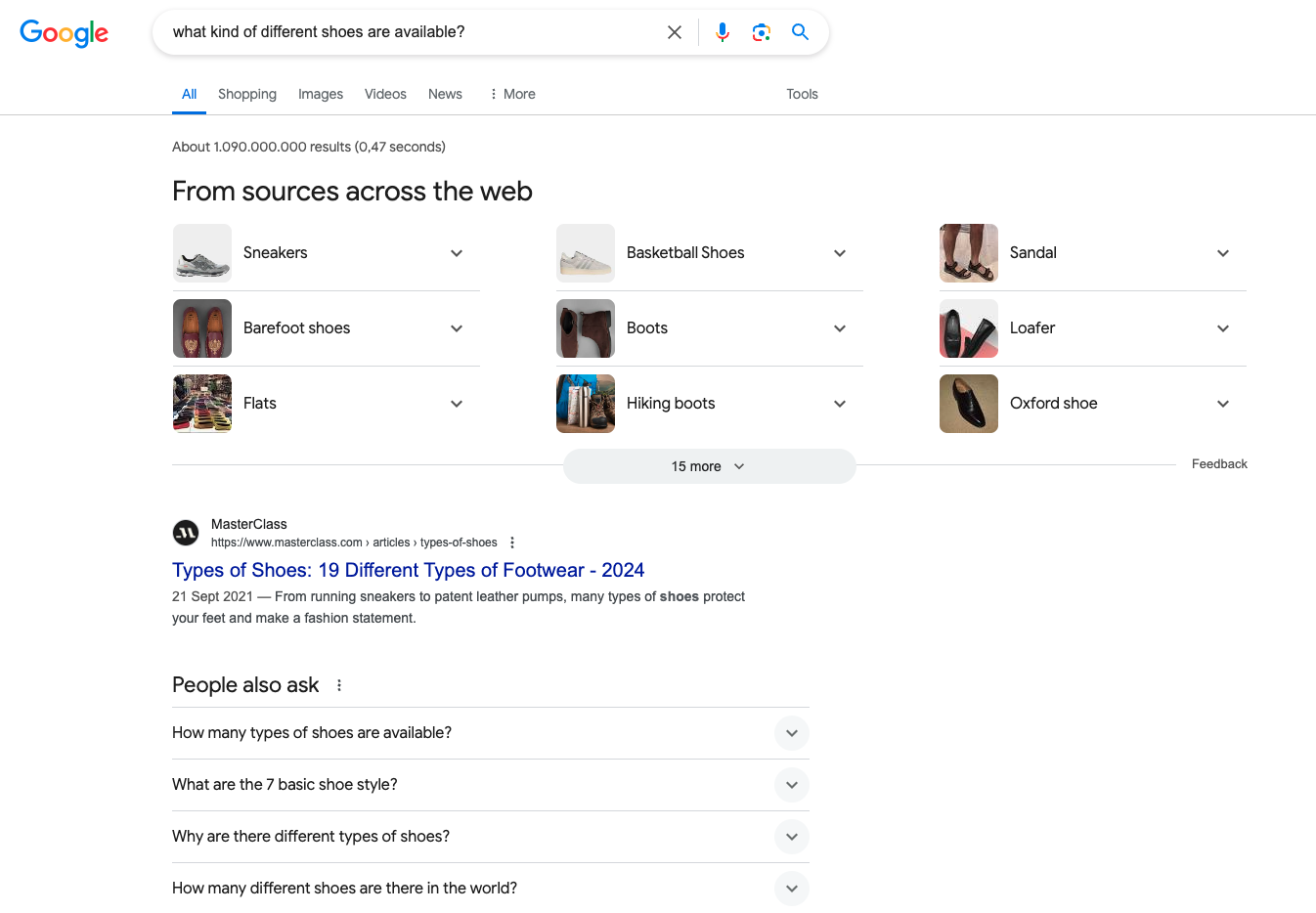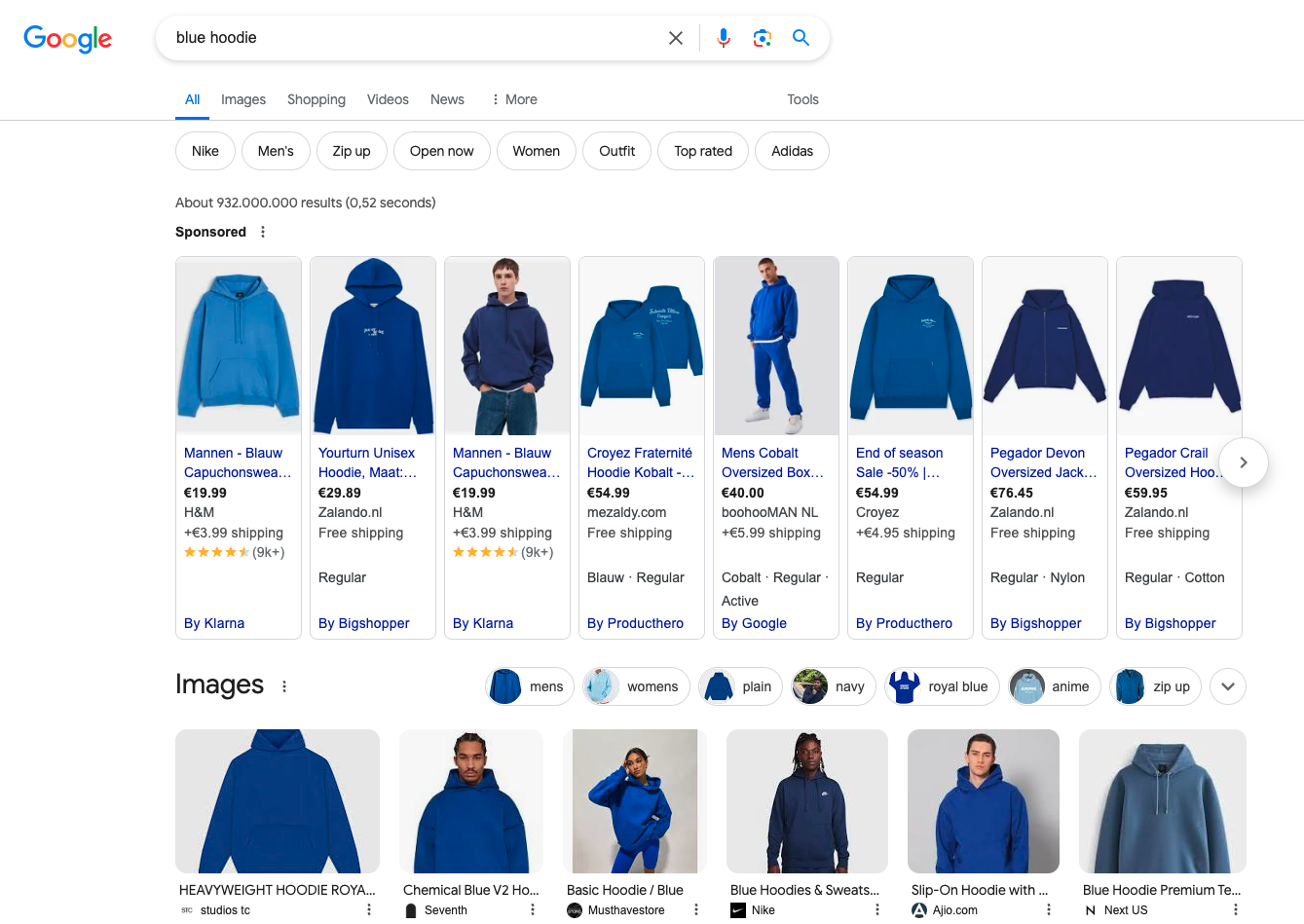In our previous blog Long Tail keywords versus Fat Head keywords in E-Commerce, we looked into the dynamic world of keywords, exploring the distinctions between fathead, long tail, and chunky middle variations. Today, we shift our focus to another crucial aspect of SEO strategy: Search Intent. As online retailers strive to maximize their visibility and drive targeted traffic, understanding and catering to search intent is crucial for success in driving organic traffic and revenue of your webstore.
Deciphering Search Intent
Search intent refers to the underlying motivation behind a user’s search query. It goes beyond the keywords themselves and delves into why someone is searching for specific information, products, or services. By understanding search intent, retailers can tailor their content to better meet the needs and preferences of their target audience, ultimately driving higher conversion rates and maximizing ROI. Different types of Search Intent There are four primary types of search intent:
Why it’s important to understand Search Intent for SEO success
Understanding search intent is a crucial aspect of SEO. It’s like getting a glimpse into why users are searching for something. This knowledge is invaluable because it allows you to tailor your content and website to meet their needs effectively. Search intent serves as a guide for search engines to provide the most relevant results. For major search engines like Google, deciphering search intent is like cracking a secret code. They analyze the words in a search phrase to determine what the user is seeking. For instance, if someone searches for “running shoes” Google understands they’re likely interested in athletic wear and adjusts its results accordingly. But Google doesn’t stop there. It also tracks how users search over time, allowing it to refine its results to better match user intent. For marketers, understanding search intent is like finding a treasure map to potential leads and target audiences. And for online retailers, it’s the key to creating content that resonates with users and drives conversions.
How can you recognize the type of a search phrase?
To understand how Google categorizes search intent, examine the search results it provides. Perform a search related to the topic or product/service you aim to rank for.
Deciphering Search Intent
Search intent refers to the underlying motivation behind a user’s search query. It goes beyond the keywords themselves and delves into why someone is searching for specific information, products, or services. By understanding search intent, retailers can tailor their content to better meet the needs and preferences of their target audience, ultimately driving higher conversion rates and maximizing ROI. Different types of Search Intent There are four primary types of search intent:
- Navigational Intent: Users are seeking a specific website or webpage. For example, someone searching for “Nike” has a navigational intent. The user wants to learn more about the brand and is looking for sites to read more but doesn’t show intent yet to purchase a specific product.
- Informational Intent: Users are looking for information on a particular topic. This could for example be informational articles regarding what kind of shoes exist.
- Commercial Intent: Users are in the research phase and are likely considering making a purchase but haven’t yet decided. They may search for product reviews, comparisons, or pricing information.
- Transactional Intent: Users are ready to make a purchase and are looking for the best place to do so. They may use keywords like “buy,” “order,” or “purchase.”
Why it’s important to understand Search Intent for SEO success
Understanding search intent is a crucial aspect of SEO. It’s like getting a glimpse into why users are searching for something. This knowledge is invaluable because it allows you to tailor your content and website to meet their needs effectively. Search intent serves as a guide for search engines to provide the most relevant results. For major search engines like Google, deciphering search intent is like cracking a secret code. They analyze the words in a search phrase to determine what the user is seeking. For instance, if someone searches for “running shoes” Google understands they’re likely interested in athletic wear and adjusts its results accordingly. But Google doesn’t stop there. It also tracks how users search over time, allowing it to refine its results to better match user intent. For marketers, understanding search intent is like finding a treasure map to potential leads and target audiences. And for online retailers, it’s the key to creating content that resonates with users and drives conversions.
How can you recognize the type of a search phrase?
To understand how Google categorizes search intent, examine the search results it provides. Perform a search related to the topic or product/service you aim to rank for.
-
- If the top results include links to a specific company’s website, a company’s knowledge panel, tweets from the company, or Google Ads from the company itself, Google likely sees it as a navigational query.

- If the search outcomes present an answer box, a list of URLs, event listings, the ‘people also ask’ section, the knowledge panel, a map, and/or videos, it indicates an informational search.

- When the results primarily display Google Ads, product listings with reviews, a booking tool, or a map showing a store’s location, Google likely interprets it as commercial or transactional intent.

- Creating Relevant Content: Develop content that directly addresses the user’s query and provides valuable information or solutions This is especially important if you want to attract users to your webshop even if they’re not already in the Commercial or Transactional Search Intent stages.
- Optimizing Keywords: Choose keywords that reflect the user’s intent and incorporate SEO optimized pages into your webshop.
- Providing Clear Calls to Action: Guide users toward the desired action, whether it’s making a purchase, signing up for a newsletter, or contacting customer support.
- Analyze Search Patterns: Identify trends and patterns in user search behavior to better understand search intent.
- Optimize Content: Automatically optimize content based on search intent, ensuring that it resonates with the target audience.
- Automatically create pages with content optimized for specific search phrases and search intents
- Track Performance: Monitor the effectiveness of content and keywords and adjust accordingly.
- If the top results include links to a specific company’s website, a company’s knowledge panel, tweets from the company, or Google Ads from the company itself, Google likely sees it as a navigational query.
Book your free demo
See how Aloome works in action.
Request your free demo today and discover how smart generative AI can unlock your growth.
